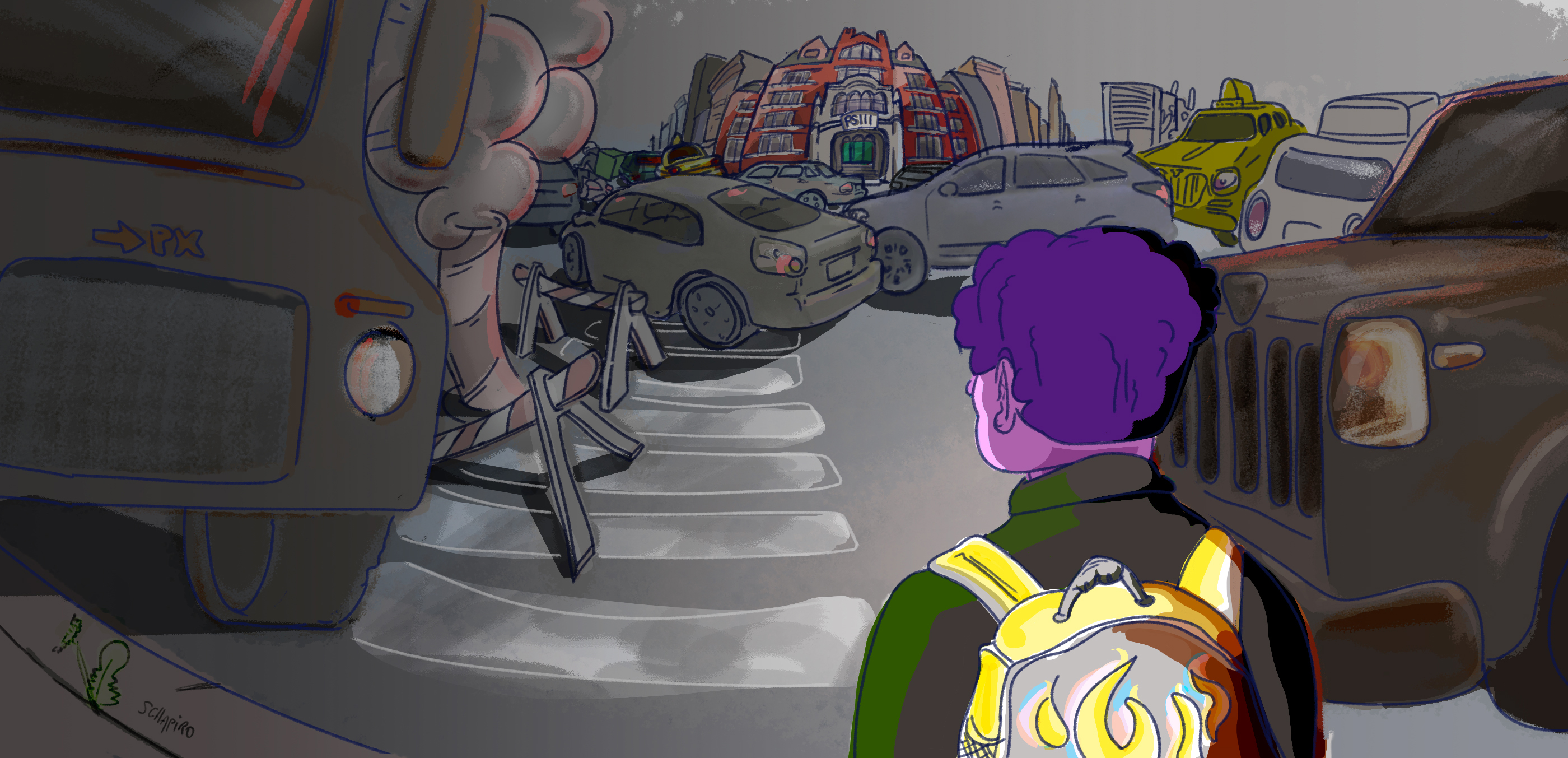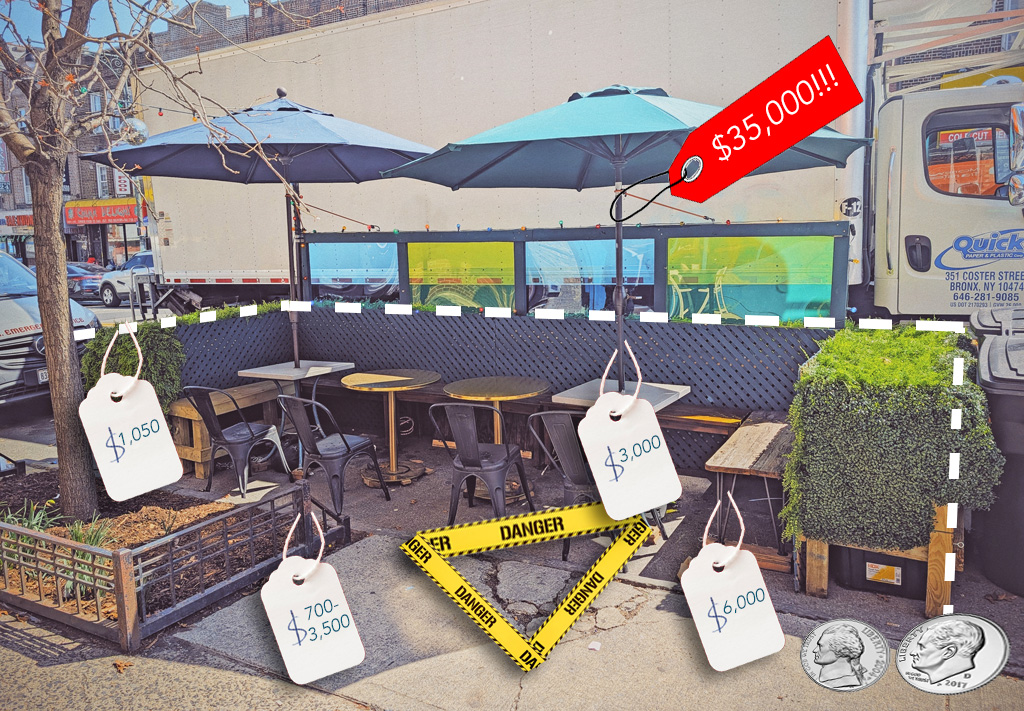Two years ago, a boy crossing a street in Queens on his way to school was run over and killed by a man driving a 20-ton truck. Seven weeks later, a girl walking to school with her brother in Brooklyn died under the wheels of a school bus. Two days after that, in the same neighborhood, a woman driving with a suspended license struck and killed a boy in a crosswalk. He was also heading to school.
After each death, city leaders expressed indignation and sorrow, and vowed to make streets safer.
On the streets where the children were killed, few changes were made.
Their deaths were not aberrations, but part of a steady drumbeat of violent encounters between drivers and children walking to and from school in New York City. This drumbeat is not simply part of the larger rhythm of traffic injuries and deaths on city streets. A six-month Streetsblog investigation found that streets near schools are uniquely dangerous, with rates of crashes and injuries that exceed city averages — particularly near schools where most students are poor or children of color. The city's efforts to reduce these dangers have proven inadequate, leaving some of the city's most vulnerable residents exposed to risk in places where they have no choice but to be.
Streetsblog studied data on nearly one million car crashes in New York City from July 2015 through November 2021, and built a database of every collision that occurred within 250 feet of a city-run public school. This analysis revealed:
- On school days, streets near schools are more dangerous on average than other city streets. During the 8 a.m. hour, when hundreds of thousands of children stream into 1,600 city-run public schools, there are 57 percent more crashes and 25 percent more injuries per mile on streets near schools than on the city's other streets. This disparity largely disappears on days when schools are closed.
- Streets are especially dangerous outside schools where most students are poor or children of color. In the 2019 school year, for example, the rate of people injured by drivers on school days was 43 percent higher outside school buildings where a majority of students were brown or Black than outside school buildings with majority-white students. Crashes are more common too. These disparities have existed for years.
- Drivers crash nearly 50 times and injure a dozen people near city public schools during the average day when schools are open. That's a crash every 29 minutes and an injury every two hours. The chaos peaks during the hours when children arrive at school in the morning and leave in the afternoon. At those times, there is a crash near a school every 17 minutes and an injury every 72 minutes.

Streetsblog also found that drivers have killed at least 24 children heading to or from school on foot or bike in New York City in the past decade, according to news reports. The latest was May 4.
The elevated danger around schools exists despite the tens of millions of dollars the city spends annually to make school streets safe. This money has bought thousands of school-zone speed cameras, teams dedicated to school safety at the city Department of Transportation and an army of crossing guards. Yet school streets remain far more dangerous than the average city street on school days.
Current and former city officials blamed these dangers on the city Department of Transportation, which typically makes only modest changes to the design of unsafe school streets — too modest to make much difference. Exacerbating the problem, the New York City Police Department has left its ranks of school crossing guards chronically understaffed, union leaders said, and the guards that are employed face dangerous work conditions for rock-bottom pay.
“The city needs to do something about it,” said Charles T. Brown, an urban planner and professor at Rutgers University. “It needs to start investing more resources in and around schools in Black, brown and low-income communities. How many more children of color have to die before that’s done?”
60 feet
Daunte Tate used to ride the Bx38 bus home from his Bronx high school. Now he rides the Bx30. It takes twice as long, but it has one advantage: he doesn’t have to cross the street in front of his school to catch it.
Daunte, a ninth grader at Bronx Health Sciences High School, remembers the afternoon in September when an SUV driver rammed into four teenagers and two adults on Baychester Avenue in front of the school. It was a freak crash, set in motion by a stabbing. But another crash hurt a pedestrian there seven weeks later, this time when kids were arriving in the morning. Another pedestrian was injured in a crash the next day. So Daunte switched buses. Baychester Avenue is only 60 feet wide, but he’d rather not chance it.
“The risk is still there,” he said one afternoon while waiting for his slow bus home, standing far back from the curb.
His mom feels the same.
"I’d rather him getting home late than not getting home at all," she said later.
Like other school streets in the city, that portion of Baychester Avenue is most dangerous precisely at the times when kids are present, Streetsblog found.
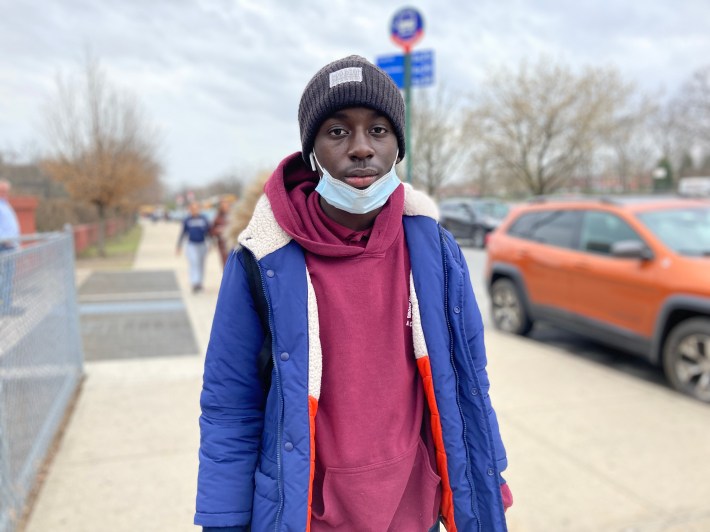
As Daunte waited for his bus, kids poured out of the drab, hulking buildings behind him. Bronx Health Sciences is one of eight city-run public schools in the complex. Thousands of students study there — overwhelmingly poor children of color, city data show.
Some walked past shoulder-high grilles of illegally parked SUVs to board school buses in the street. Others ascended a long ramp to a trash-strewn pedestrian walkway that crosses the six-lane highway running parallel to Baychester Avenue.
The situation outside Daunte’s school is typical of many neighborhoods of color, researchers said. Often they are riven by large, dangerous roads built for drivers passing through, not for people who live there and travel on foot.
This partially explains why streets are more dangerous around city schools where most students are brown or Black; the streets are more dangerous in their broader neighborhoods, too. Analyzing city data, Streetsblog found that there were more pedestrian injuries per capita in neighborhoods with majority non-white school buildings than in neighborhoods with majority white buildings.
The neighborhoods are also denser around the majority non-white schools, Census data show. But those school buildings have only slightly larger enrollments on average, and many children do not attend schools in their neighborhoods.
Another factor: Census figures show that fewer households have access to vehicles in the neighborhoods with schools of color. That finding also resonates with nationwide disparities. With fewer cars available, Black children are more likely to walk to school than white children, according to Seth LaJeunesse, assistant director of the National Center for Safe Routes to School.
Where roads are more dangerous, and children less shielded from those dangers, the results are predictable.
Cara Hamann, a University of Iowa injury epidemiologist, found that pedestrians of color are hospitalized at higher rates than white pedestrians. She also found that a larger share of hospitalized pedestrians of color are children.
“It’s an exposure thing,” Hamann said in an interview. Kids driven to school are “not exposed at the same way as a kid walking or biking.”
In 2019, motor vehicle collisions were a leading cause of death for children ages 14 and under in New York City, according to the city Health Department.
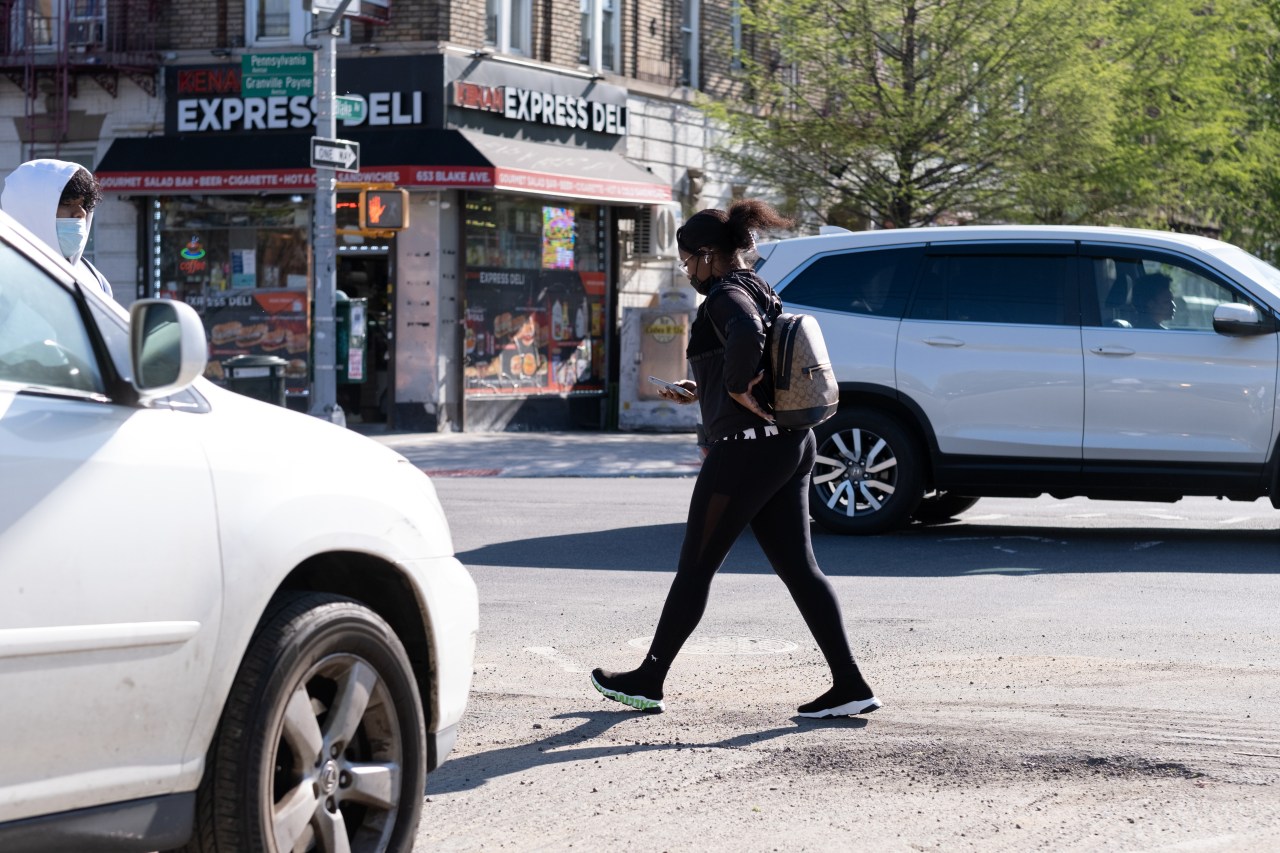
'A deep dive'
In January, nearly two years after two children were killed walking to school in East New York, a DOT staffer attended a community board meeting there to present the agency’s efforts to make school streets safer.
Perhaps no other neighborhood had more traffic violence around schools recently than East New York, a predominantly Black community in Brooklyn. Between September 2015 and November 2021, drivers killed four people and injured another 190 near East New York schools during student drop-off and pick-up hours. No other city neighborhood had more than one such death.
“We want to do what we would call a deep dive within East New York and Brownsville, because we knew that addressing these concerns with a quick fix wouldn’t suffice,” Jeffrey McDuffie, the DOT staffer, told the community board members.
The results of that two-year "deep dive": extra painted lines and small speed bumps at the intersections where the children were killed, re-timed traffic signals at some intersections, and lowered speed limits on what appeared to be six blocks. The neighborhood is five square miles.
Two months later, at another community board meeting, McDuffie unveiled what appeared to be the centerpiece of DOT’s effort: a new crosswalk, painted pedestrian space, one redesigned intersection, and, possibly, additional stop signs or lights outside two school buildings. There are at least 25 other school buildings in East New York.
The proposed changes left Wilfredo Florentino underwhelmed.
“The Department of Transportation and other city agencies remain absolutely impotent at addressing just basic transportation issues in our community,” said Florentino, co-chair of the East New York community board’s transportation committee. “The fact that our streets are not safe for our kids is something that is absolutely unacceptable.”
The modest scale of the city's intervention outside East New York schools is not unique. Streetsblog studied conditions outside nine school buildings with many nearby crashes and injuries, or where kids were killed, and found chaotic streets tempered by few significant safety features. Most lacked design elements to slow turning drivers. Only half were on streets with speed humps or reduced speed limits. Some lacked traffic signal timing that gives pedestrians a head start. Some had no crossing guards. Only one was on a street closed to car traffic — a method of keeping kids safe outside schools employed throughout the world, but rarely in New York.
At almost every school visited by Streetsblog, curbside space reserved for drivers to safely load and unload kids was blocked by illegally parked cars. None had parking tickets.
Nowhere were the consequences of such conditions more apparent than outside five city-run high schools on the Erasmus Hall campus in Flatbush, Brooklyn. Nearly 2,000 children studied there last year, more than three quarters of them poor and nearly all of them brown or Black. On one recent afternoon, masses of kids spilled out onto Flatbush Avenue after class, some walking in the street to avoid the crowded sidewalk. They walked next to drivers fighting through a thicket of cars at the intersection of Flatbush and Church avenues. Some drivers swerved into oncoming traffic to cut ahead. Others sat parked in bus stops staring at their phones.
City data show there were 481 crashes and 224 injuries outside the campus in the period studied. More than 40 of those injuries were during drop-off and pick-up hours — the most outside any school building in the city. Yet no major street safety improvements were apparent along Flatbush Avenue.

The DOT said it has installed right-turn-only lanes at the intersection, banned left turns from Church Avenue onto Flatbush Avenue and re-timed signals to give pedestrians a head start.
During Streetsblog's recent visit, it seemed like every student had a story about near-misses with drivers around the campus.
“I had a few cars try to run me over,” said Ameirah Lewis, an 11th grader at Science, Technology and Research Early College High School. “You just used to it.”
Ameirah had little hope the city would intervene.
“You can fix it, but who’s going to fix it?” she asked. “It’s just one of those things that won’t change.”
Department of Education spokesman Nathaniel Styer declined to make Chancellor David Banks or other DOE officials available for interviews. He did not comment on Streetsblog's findings or answer detailed questions, referring them to DOT.
DOT spokesman Vin Barone declined to make Commissioner Ydanis Rodriguez or School Safety Director Nina Haiman available for interviews. Asked to comment on Streetsblog's findings, Barone said: “DOT has completed hundreds of street redesigns near schools across the city in recent years and we are focused on continuing to deliver these projects where they are needed the most. This administration is placing equity at the forefront of its work; guided by a new equity formula, the DOT will determine future project locations based on crash history as well as neighborhood demographics, density, and history of prior investments.”
'Mommy, a car is coming'
Rougui Kebe has watched two children die after being hit by drivers, both in the Bronx, both members of her family.
Her brother was run over in 2012. At the time, Rougui was pregnant with her first child, Mariame. Mariame was run over in 2016.
Rougui was also pregnant when Mariame was killed, but she miscarried two weeks later. “Too much stress,” she explained recently.
Mariame died while walking to school. It was a chilly morning in May 2016, and Mariame, 3, was on Gerard Avenue crossing 164th Street. She was in the crosswalk behind Rougui, who was pushing her other daughter in a stroller. Then, a 21-year-old law clerk looking for parking ran over Mariame, cracking her skull. She bled from her nose, mouth and ears. Her eyes closed and her small body shook. The last thing she said before she was hit: “Mommy, a car is coming."
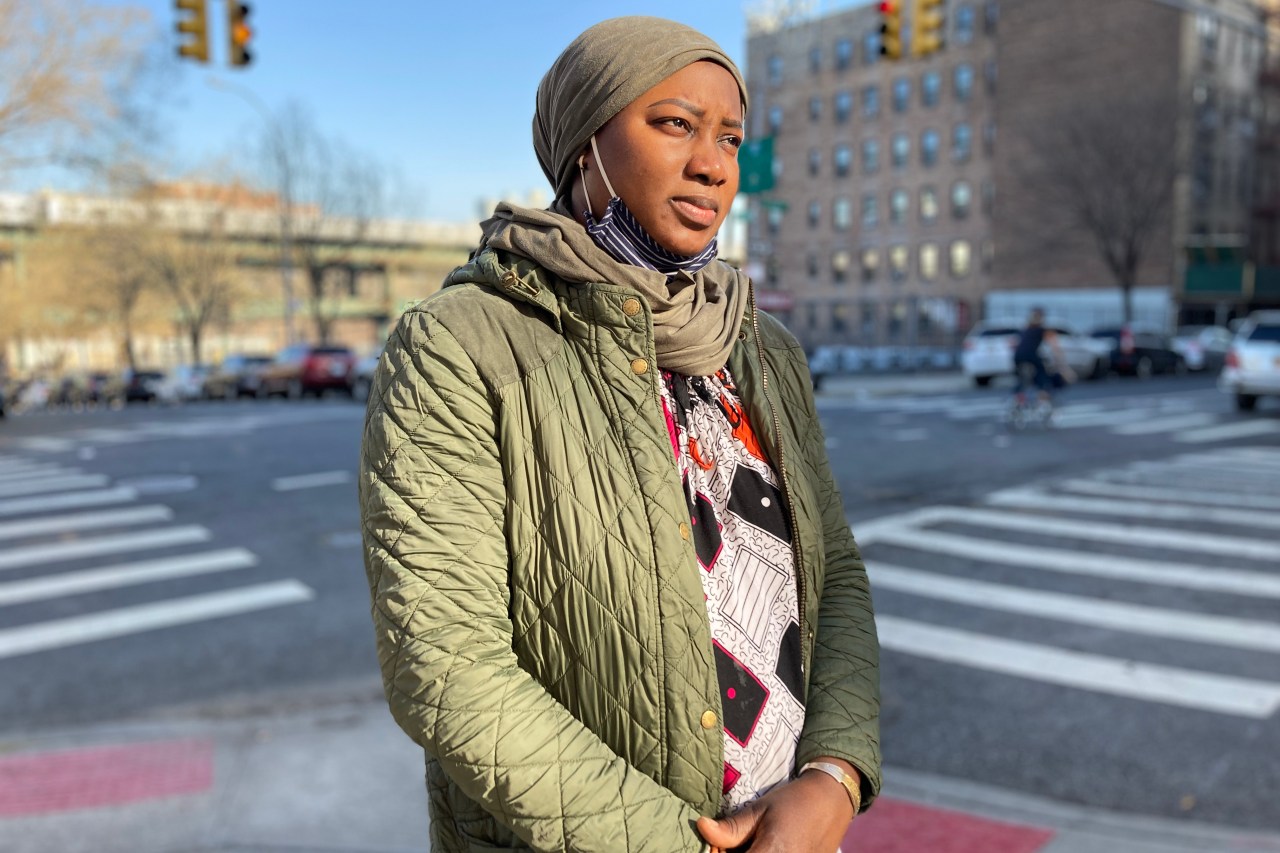
The driver, Randy Ramsammy, said that he didn’t see Mariame and received a ticket: failure to exercise due care. A transcript of a New York State Department of Motor Vehicles hearing on the crash reads like a formality:
THE COURT: Okay, then we don’t need to talk about the aftermath, but once you recognized that someone had been struck, you stop, obviously, [and] took appropriate steps?
MR. RAMSAMMY: Uh-huh.
A DMV spokesman said Ramsammy’s license was revoked for about three years. City data show the car he was driving has been ticketed twice for speeding near schools since killing Mariame. Ramsammy, through his lawyer, declined to comment.
Rougui sued Ramsammy and won a $150,000 settlement, according to a court filing. She still walks two of her other children to school every day — to the same pre-kindergarten that Mariame attended. They walk a different route, though, so Rougui does not have to cross the street where Mariame died.
“I don’t know what God is going to do,” she said. “But I’m always scared. Always.”
What the city does
New York City spent more than $43 million to employ 2,600 school crossing guards in fiscal year 2021. Its network of school-zone speed cameras generate millions of tickets each year to drivers caught going more than ten miles per hour over the speed limit near schools. It has staffers at DOT devoted to redesigning school streets and visiting hundreds of schools a year to talk street safety with kids. During the pandemic, it allowed schools to bar cars from school streets, which 40 still do.
These efforts have had an impact. Crashes and injuries have dropped near schools where speed cameras were installed, city data show. And a 2013 study found that school-aged pedestrian injury rates fell in neighborhoods where the city implemented 124 “Safe Routes to School” projects.
Nor are the dangers outside schools entirely within city control. New York State lawmakers have authority over the cameras and have rebuffed requests to cede that responsibility to the city.
Then there are bureaucratic hurdles. Kim Beng Lua, who worked for DOT’s School Safety Unit from 2007 to 2015, said his projects were often opposed by community boards.
“When I first started, I couldn’t even suggest removing parking,” he said.
And any project that involved more permanent changes to streets — pouring concrete instead of simply adding paint — required a lengthy funding and approval process, he said.
So the team mostly stuck to paint, Lua said. Workers put up signs, too, although a DOT study later found that signs and street markings outside schools don’t actually do much.
One current DOT official, who spoke on the condition of anonymity, said the agency’s school street safety efforts have improved, but they're still too small in size and number to have an impact.
“It’s kind of like, a little spattering here, a spattering there, but not really enough spice to really make a difference,” the official said.

Spit on, cursed at
Children are not the only ones getting hurt outside city schools. The scars lining JoEllen Gill are proof.
In May 2007, Gill stood on a Staten Island sidewalk, waiting to shepherd three approaching children across the street on their way to school. Gill was the only school crossing guard working the intersection, a tangle of streets next to the Staten Island Expressway. As Gill waited, two drivers collided nearby, and one, in a multi-ton SUV, ran into her. The impact threw Gill into the air, where she was struck by the other car — a convertible pick-up truck. Her body skidded across the windshield, and her bright yellow vest snagged on the truck’s side-view mirror. She hung from it as the truck careened across a lawn, eventually pitching Gill to the ground and running over her.
Her right elbow is held together with screws and plates. One arm turns blue if it hangs down for too long, and the other is now shorter than it was. She has trouble bending over, and ocular migraines occasionally turn her vision kaleidoscopic. She broke nine ribs; they are permanently disjointed.
“The worst part was the ribs,” she said recently. “It still hurts."
Such are the perils faced by the city’s school crossing guards.
Interviews with current and former guards painted a picture of grueling, dangerous work. The guards, mostly women of color, said they have been spit on, cursed at and threatened by drivers. Nearly all said they have been almost hit by drivers. Leaders of the union that represent the guards estimated that ten of them have been injured by drivers since 2014. At least two city crossing guards have been killed on the job by drivers.
For their troubles, the guards receive a little over minimum wage, plus health care.
Where the city fails to make streets safe, it sends crossing guards out to make up the difference. Their tools: a uniform, a whistle, a willingness to put their bodies between children and multi-ton vehicles and the hope, however optimistic, that drivers will yield.
No wonder, then, that there is a chronic shortage of guards in the city, according to their union.
City data show there were around 2,200 crossing guards in April, down from more than 3,000 in fiscal year 2019.
“People don’t want the job,” said Denise Ferrante, school crossing guards chair for Local 372, which represents the guards and other school workers. “They don’t want to risk their lives.”
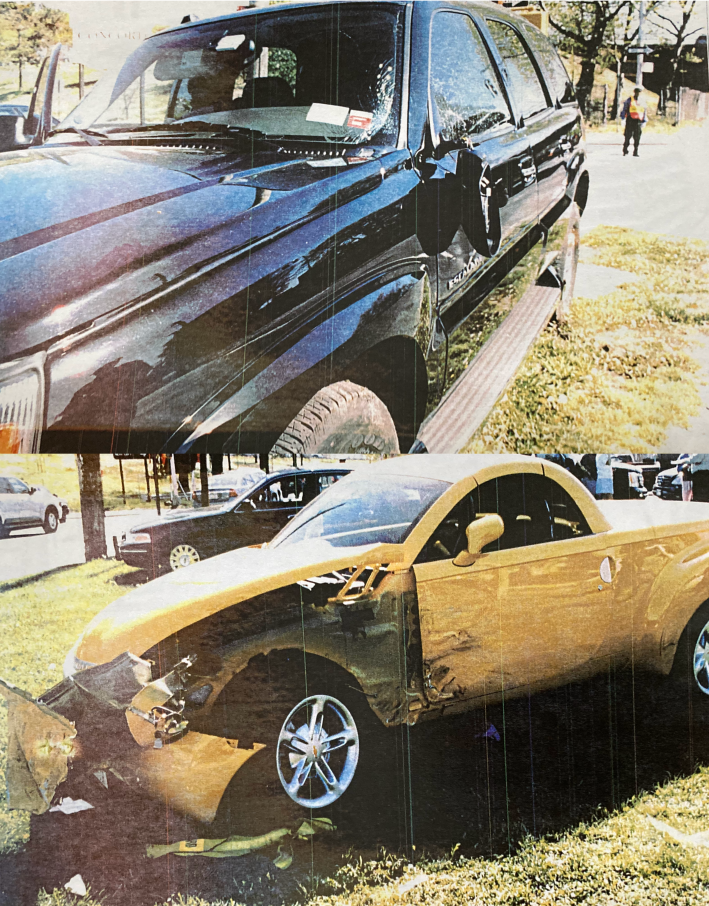
Local 372 President Shaun Francois said the shortage is nothing new, with vacant posts now likely numbering in the hundreds. The pandemic didn't help: some guards quit instead of complying with the vaccine mandate for city workers, he said. But the job’s high risk and meager pay make it a constant challenge to attract and retain recruits, a challenge the city has failed to meet.
“Administration after administration has neglected this area,” said Donald Nesbit, the union’s executive vice president.
The NYPD, which runs the guards program, declined to make Transportation Bureau Chief Kim Royster available for an interview. A spokesperson said the department planned to hire additional guards this month, but did not say how many or answer other questions.
At the intersection where Gill almost died, no safety upgrades are apparent. Drivers still race up Targee Avenue to the expressway. On a recent afternoon, skid marks were visible on the lawn where Gill was hit. Still no barrier separates it from the road.
Twelve years before she was hit, long before becoming a crossing guard, Gill happened to be quoted in the Staten Island Advance on the topic of guards. The city had removed one outside her child's school, and she was outraged.
“What are waiting for?” she asked. “A child to be hurt?”
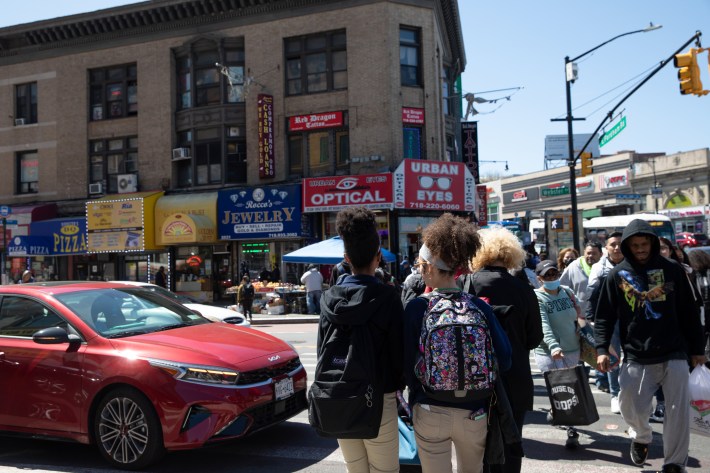
About this story
This story stems from a six-month investigation that involved an analysis of more than 986,000 car crashes in New York City, as well as more than 50 interviews with students, parents, city officials, school workers and injury epidemiologists, observations outside schools on dangerous streets citywide, and a review of hundreds of pages of municipal records and legal filings.
To conduct this analysis, Streetsblog joined data on the crashes with data on the locations (e.g.), demographics (e.g.) and calendars (e.g.) of public schools run by the city Department of Education. Most of this data was published on the city's Open Data portal. Streetsblog downloaded the data in late 2021.
Streetsblog looked at crashes between July 2015 and November 2021. Streetsblog excluded crashes from March 14, 2020, to the end of the 2019-2020 school year, when schools were closed to students because of the pandemic, and crashes during the 2020-2021 school year, when many students continued to learn remotely. It also did not consider crashes that did not involve cars, trucks, buses or other motor vehicles, or crashes with missing or flawed geographic data. The crash data did not indicate the age of crash victims or the severity of injuries.
Streetsblog considered a crash “near” a school if it occurred within 250 feet of a school that was open in the year of the crash. Streetsblog did not count crashes as near schools if they occurred within 250 feet of a school but on a controlled-access highway or grade-separated bridge.
The recorded number of crashes near schools is likely an undercount, as the NYPD stopped requiring drivers to report crashes in which no one was injured in 2020.
Streetsblog’s analysis did not consider crashes near private schools or crashes near charter schools that were not co-located in buildings with DOE-run schools.
The crash and injury rates near versus far from schools were calculated by dividing the number of crashes and injuries by the number of miles of city streets near versus far from schools. The disparity observed cannot be explained by differences in population density near versus far from schools. Streetsblog found that Census tracts where schools are located have only two percent more residents per square mile than tracts where there are no schools. Streetsblog excluded Census tracts with one resident or fewer, such as parks and cemeteries, in calculating these population densities and crash and injury rates.
Streetsblog calculated the rates of crashes and injuries near majority non-white versus white school buildings by dividing the number of crashes and injuries outside them by the number of students enrolled in schools in those buildings. The same disparities exist if the crashes and injuries are instead divided by the number of buildings.
Vehicular and pedestrian traffic volumes have an impact on crash and injury rates, injury epidemiologists said. However, DOT does not have pedestrian and vehicular traffic volume counts for each city block on different days and times.
Streetsblog defined student arrival and departure hours as 7 a.m. to 9 a.m. and 2 p.m. to 6:30 p.m. on school days. Streetsblog established these time frames based on information provided by the Department of Education and the Department of Youth and Community Development, which runs after-school programs in city schools.
The Department of Education has not yet published enrollment or demographic data per school for this school year, which began in September, so Streetsblog used data from last year to estimate this year's figures. Streetsblog could not find demographic data for a small number of schools in some years studied.
In its list of school days, Streetsblog excluded snow days and days on the school calendar when DOE attendance data (e.g.) included counts at fewer than 95 percent of schools, such as days when high school students take the Regents Examinations.
